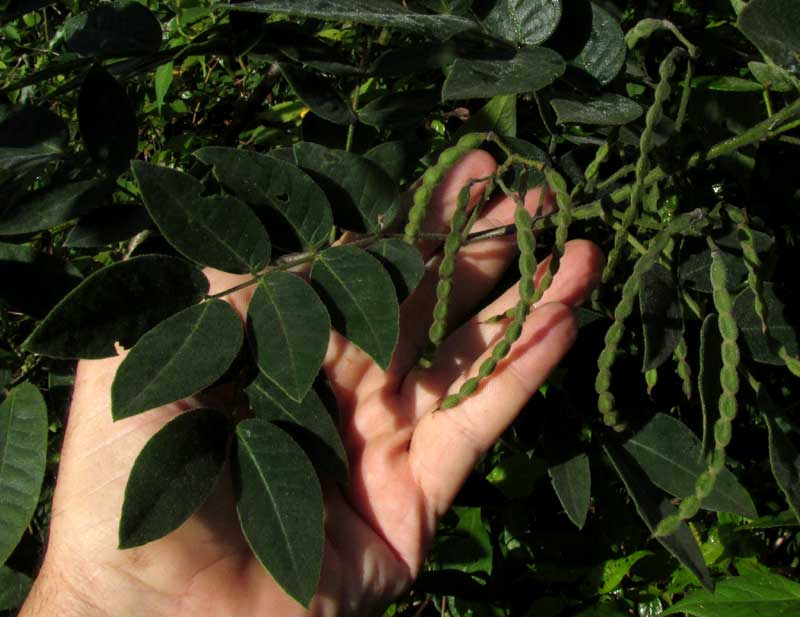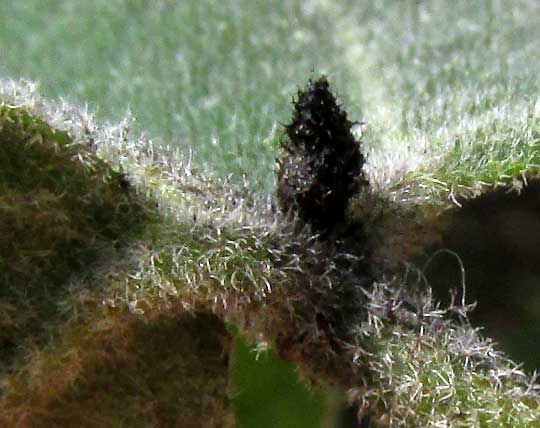Excerpts from Jim Conrad's
Naturalist Newsletter

from the November 22, 2015 Newsletter issued from Hacienda Chichen Resort beside Chichén Itzá Ruins, central Yucatán, MÉXICO
SAALCHE SENNA
A shoulder-high, woody bush at the woods' edge bore dense clusters of green-bean-like legumes, as shown above.
A few yellow blossoms remaining on the bush exhibited slight asymmetry, the five yellow petals almost identical but the brown-anthered stamens and slender, greenish-yellow style curved upward to form an upturned nose, seen below:

Two other field marks worth noting are shown below:

First, the herbage is heavily invested with velvety hairs, with many of the hairs being branched at their bases, or "stellate." Second, on the compound leaves' petioles between the lowest one or two pairs of leaflets there arise black, hairy, teardrop-shaped objects.
The teardrop-shaped objects must be ant-attracting glands, though these are different from others I've seen in the same position. Plants who attract ants onto their leaves make the leaves less attractive to tender-mouthed herbivores and seed predators.
Here in the Yucatan we're constantly meeting Bean Family bushes or small trees with slightly asymmetrical, yellow flowers, and once-divided, compound leaves often equipped with ant-attracting glands between their lowest pair of leaflets. We've come to recognize such a collection of field marks as indicating the genus Senna. Twenty-two Senna species are listed for the Yucatan Peninsula, and we've seen our share of them.
However, I've not seen a Senna whose legumes were so constricted between their beans as this one's are, nor have I encountered such a hairy one, or one whose petiole glands were so black and hairy. Still, all the other features are pure Senna.
Before beginning the process of comparing our pictures with the 22 Senna species listed for the Yucatan, I thought I'd try to cheat and maybe save some time. I looked among the 22 names, hoping to find a species name describing either this plant's unusual bead-necklace-like legumes, or the plant's exceptional hairiness. And there was one such name, one with the species name of villosa, villosa meaning "villous," which means "with long and soft, not matted, hairs." And when I checked to see what SENNA VILLOSA looked like, the images matched our plant in every detail.
Senna villosa is endemic just to Mexico, occurring spottily from Baja California across central and southern Mexico to the Yucatan, where it's common enough to have a Maya name, which is Saalche.
To be of such limited distribution, there's a surprising amount of information about it on the Internet. That's because as a medicinal plant Saalche Senna traditionally has been "...used topically to treat skin infections, pustules and eruptions and to heal wounds by scar formation."
In fact, a 2014 paper by Ana del Carmen Susunaga-Notario and others reported that not only are extracts from the plant anti-inflammatory, but also they are effective against the Trypanosoma parasite.